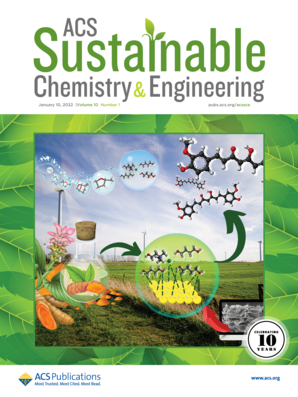火星资源就地利用:等离子体技术的进展与展望
IF 7.3
1区 化学
Q1 CHEMISTRY, MULTIDISCIPLINARY
引用次数: 0
摘要
由于地球供应链的高成本和复杂性,就地资源利用(ISRU)对可持续火星探测至关重要。火星的恶劣环境──稀薄的富含二氧化碳的大气、极端的温度波动、沙尘暴和高辐射──对传统的加工工艺构成了重大挑战。等离子体技术以其高能量密度、化学反应性和操作灵活性而闻名,提供了有前途的解决方案。本文综述了用于ISRU关键任务的非热等离子体系统的最新进展,包括用于氧气和燃料生产的CO2分解,从水合矿物中提取水,以及用于栖息地建设的风化层烧结。特别关注微波和介质阻挡放电等离子体,与美国宇航局的MOXIE等传统系统相比,它们显示出更高的氧气产量和能源效率。火花等离子烧结也因其从火星土壤中生产高强度陶瓷的潜力而受到重视。尽管技术前景看好,但部署挑战依然存在,包括抗热应力、粉尘缓解和能源优化。提出了先进的材料选择、自清洁表面和可再生能源集成等策略来提高系统的弹性。在火星之外,这些等离子体技术在地球上的应用潜力巨大,包括二氧化碳增值、分散式水处理和低能耗废物回收。通过连接地外和地面需求,等离子驱动的ISRU代表了一个在极端限制下推进可持续工程的两用创新平台。本文章由计算机程序翻译,如有差异,请以英文原文为准。

In Situ Utilization of Martian Resources: Advances and Prospects in Plasma Technology
In situ resource utilization (ISRU) is essential for sustainable Mars exploration due to the high cost and complexity of Earth-based supply chains. Mars’ harsh environment─marked by a thin CO2-rich atmosphere, extreme temperature swings, dust storms, and high radiation─poses significant challenges for conventional processing. Plasma technologies, known for their high energy density, chemical reactivity, and operational flexibility, offer promising solutions. This review examines recent advances in nonthermal plasma systems for key ISRU tasks, including CO2 decomposition for oxygen and fuel production, water extraction from hydrated minerals, and regolith sintering for habitat construction. Special attention is given to microwave and dielectric barrier discharge plasmas, which have shown enhanced oxygen yield and energy efficiency compared to traditional systems like NASA’s MOXIE. Spark plasma sintering is also highlighted for its potential in producing high-strength ceramics from Martian soil. Despite technical promise, deployment challenges remain, including thermal stress resistance, dust mitigation, and energy optimization. Strategies such as advanced material selection, self-cleaning surfaces, and integration with renewable energy are proposed to improve system resilience. Beyond Mars, these plasma technologies have strong potential for Earth-based applications including CO2 valorization, decentralized water treatment, and low-energy waste recycling. By bridging extraterrestrial and terrestrial needs, plasma-driven ISRU represents a dual-use innovation platform for advancing sustainable engineering under extreme constraints.
求助全文
通过发布文献求助,成功后即可免费获取论文全文。
去求助
来源期刊

ACS Sustainable Chemistry & Engineering
CHEMISTRY, MULTIDISCIPLINARY-ENGINEERING, CHEMICAL
CiteScore
13.80
自引率
4.80%
发文量
1470
审稿时长
1.7 months
期刊介绍:
ACS Sustainable Chemistry & Engineering is a prestigious weekly peer-reviewed scientific journal published by the American Chemical Society. Dedicated to advancing the principles of green chemistry and green engineering, it covers a wide array of research topics including green chemistry, green engineering, biomass, alternative energy, and life cycle assessment.
The journal welcomes submissions in various formats, including Letters, Articles, Features, and Perspectives (Reviews), that address the challenges of sustainability in the chemical enterprise and contribute to the advancement of sustainable practices. Join us in shaping the future of sustainable chemistry and engineering.
 求助内容:
求助内容: 应助结果提醒方式:
应助结果提醒方式:


